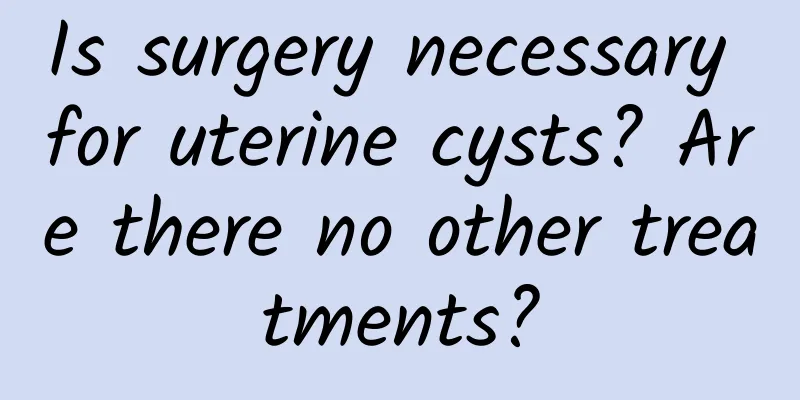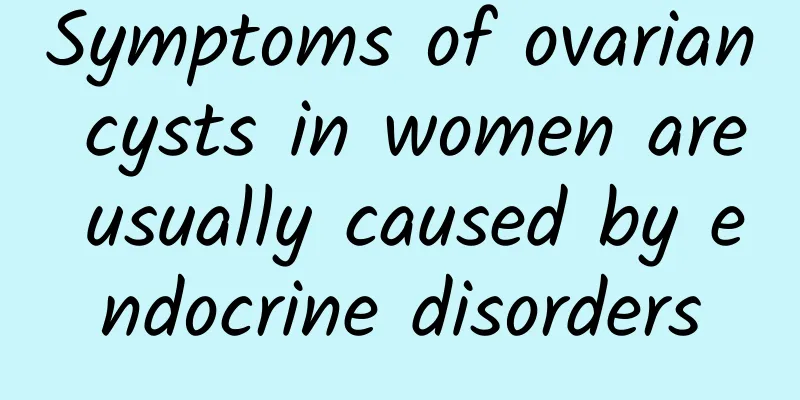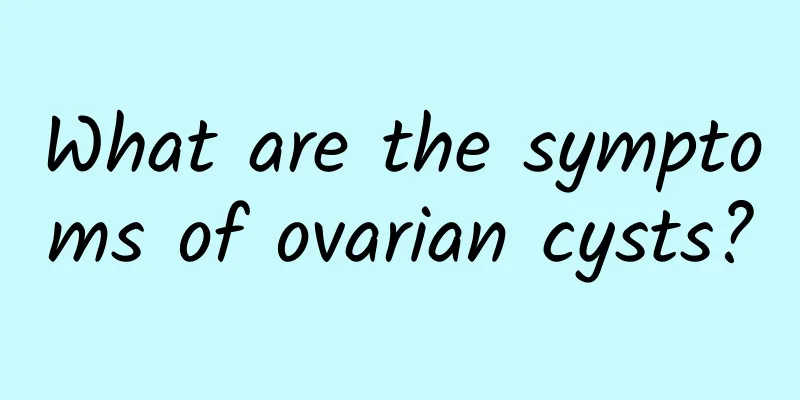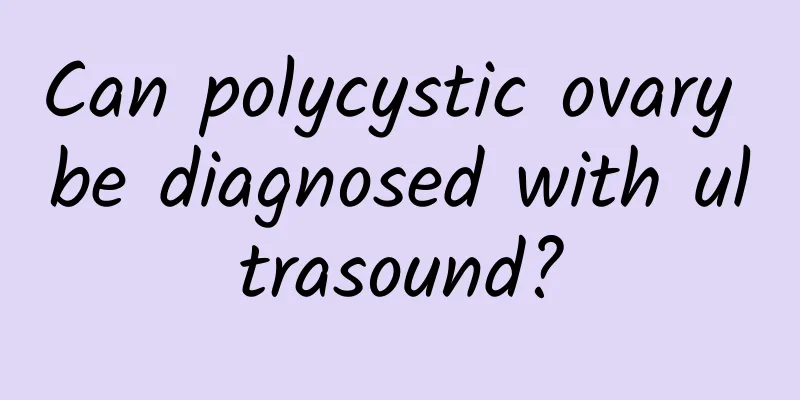Is surgery necessary for uterine cysts? Are there no other treatments?

|
Uterine cysts do not necessarily require surgical treatment. The specific treatment method depends on the size and nature of the cyst and whether it causes obvious symptoms or complications. Some small benign cysts can be controlled by observation or drug treatment, but malignant or huge cysts may require surgical intervention. Uterine cysts are a common gynecological disease, usually caused by abnormal hormone secretion, inflammatory response or other pathological changes. Common types include uterine fibroid cysts, adenomyosis cysts, etc. If the benign cyst is small or the symptoms are not obvious, surgical treatment is usually not required, and its changes can be observed through regular ultrasound examinations for 3-6 months. If combined with menstrual abnormalities, pain or infertility problems, medication can be used for treatment, such as menstrual regulation drugs (such as medroxyprogesterone acetate), gonadotropin-releasing hormone agonists (GnRH-a), or oral contraceptives to regulate hormone levels. Malignant cysts or those that are too large (usually >5cm in diameter) may compress other organs or cause severe pain. In this case, surgical resection is generally recommended, and minimally invasive laparoscopic surgery or traditional laparotomy can be selected. The specific plan needs to be comprehensively judged based on the patient's age, fertility needs, physical condition and the nature of the cyst. Uterine cysts are a common gynecological disease, usually caused by abnormal hormone secretion, inflammatory response or other pathological changes. Common types include uterine fibroid cysts, adenomyosis cysts, etc. If the benign cyst is small or the symptoms are not obvious, surgical treatment is usually not required, and its changes can be observed through regular ultrasound examinations for 3-6 months. If combined with menstrual abnormalities, pain or infertility problems, medication can be used for treatment, such as menstrual regulation drugs (such as medroxyprogesterone acetate), gonadotropin-releasing hormone agonists (GnRH-a), or oral contraceptives to regulate hormone levels. Malignant cysts or those that are too large (usually >5cm in diameter) may compress other organs or cause severe pain. In this case, surgical resection is generally recommended, and minimally invasive laparoscopic surgery or traditional laparotomy can be selected. The specific plan needs to be comprehensively judged based on the patient's age, fertility needs, physical condition and the nature of the cyst. Early examination and standardized treatment are very important. If the cyst is small and the symptoms are not obvious, the patient needs to maintain good living habits, have regular checkups, and avoid behaviors that may aggravate the symptoms, such as sitting for long periods of time and staying up late. In your daily diet, you can focus on the intake of foods rich in antioxidants, such as green vegetables, deep-sea fish, and nuts, to enhance immunity. If the cyst continues to grow or the symptoms worsen, you should adjust the treatment strategy in time under the guidance of a doctor to avoid delaying the disease. Scientific evaluation and individualized treatment are the key to dealing with uterine cysts. |
<<: Can I get pregnant if I have irregular menstruation and polycystic ovary syndrome?
>>: What medicine to take for abdominal inflammation and pelvic inflammatory disease
Recommend
Which hospital is good for menopausal conditioning?
For menopausal conditioning, you can choose the e...
What are the treatments for functional uterine bleeding?
What are the treatments for functional uterine bl...
What are the early symptoms of ectopic pregnancy
Under normal circumstances, when the embryo is im...
Diagnosis of adnexitis
Since adnexitis is a gynecological disease caused...
How many days of bed rest after painless abortion
How many days should I rest in bed after a painle...
Women are prone to pelvic effusion
When it comes to pelvic effusion, many friends ac...
Keeping your bowels open can prevent dysmenorrhea
Dysmenorrhea makes many women suffer great pain. ...
Would you feel palpitations if you eat 500 kilograms of American beef? Scholars: 5 kg is excessive
Several non-governmental organizations including ...
How to treat second degree cervical erosion?
How to treat second degree cervical erosion? Seco...
How to treat pelvic peritonitis
With the continuous improvement of medical level,...
Can I use cupping during my menstrual period?
Cupping is generally not recommended during menst...
What to eat for menopausal endometrial thickening
Many women are aware of endometrial thickening. T...
How to prevent cervical hypertrophy?
Among gynecological diseases, cervical hypertroph...
Healthy food! Lentil weight loss recipe
When dining in Korea, there are usually side dish...
What grade of disease does uterine fibroids belong to? What grade of disease does uterine fibroids belong to?
What grade of disease does uterine fibroids belon...









